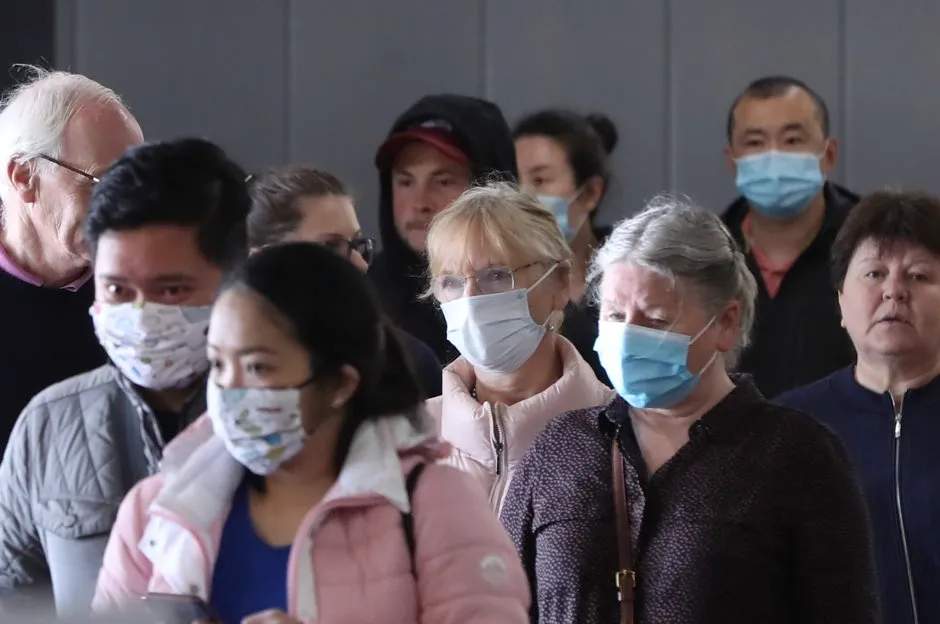At the start of the coronavirus outbreak in the UK much was made of the reproduction number (R) of COVID-19.
This is the average number of people an infected person passes the disease onto and crucially, if that figure exceeds one, the disease could rapidly spread throughout the population again.
For a number of weeks the R-value in the UK has remained below one, ranging from 0.7-1.0, and is currently at 0.7-0.9.
But experts say that as the number of infections in the UK drops, R becomes a less effective way of looking at transmission rates, especially regional R values.
As a result, from this week the government will publish growth rates.
Read the latest coronavirus news:
- Link between coronavirus and heart diseases undergoes major study
- Face mask use needed to ‘prevent COVID-19 second wave’
- BAME children 'more at risk' of rare COVID-19-related syndrome
Government advisers say regional Rs should be viewed with great caution, and that soon they will not be used because they will be too mathematically uncertain.
This is because at some point the focus needs to be on the numbers of cases and the incidence prevalence and growth.
The growth numbers will be based on the data rather than assumptions.
Scientists say that as the number of infections drop, it is not uncommon for the R-value to increase.
For example, if one person passes it on to one other, the R rate jumps to 1.0, and if that infected person infects two others, it jumps further to 2.0, despite a small number of people in the population having the virus.
So policy implications of R = 1.0 when there are 1,000 new infections per day are very different to when there are 100,000 per day.
Experts explain that this is just an inaccuracy of the R, rather than a true reflection of the trajectory of the epidemic.

The government advisers also say that going forward it is important to look at local outbreaks, and trace clusters of local outbreaks, rather than looking at regional figures.
They add that within the next few weeks they should be able to provide data looking at the numbers of cases, and incidents rather than just the R.
So why does R become less useful?
- When there are few cases, R is impossible to estimate with accuracy and will have wide confidence intervals that are likely to include one. But this does not necessarily mean the epidemic is increasing.
- As incidence decreases, R will tend towards 1, and has to be evaluated in conjunction with incidence.
- R is an average measure. When incidence is low, an outbreak in one place could result in estimates of R for the entire region to become higher than one.
Conversely, small, local outbreaks will not be detected. Estimates of R based on small numbers may also not capture change in the area fast enough to inform policy in a useful way.
How can I protect myself from the coronavirus when shopping?
You’ll have seen signs in your local supermarket advising you to keep two metres from others while moving around the store. This is key to reducing your chances of catching the virus while shopping.
The coronavirus SARS-CoV-2 is spread through respiratory droplets that leave our mouth and nose when we cough, sneeze, or sometimes even talk. The droplets sprayed out by an infected person will contain the virus, which could then enter your body via your mouth, nose or eyes (this is why you shouldn’t be touching your face).
Respiratory droplets don’t usually travel more than one metre, so by keeping two metres from others, you’ll reduce the likelihood of being in the firing line. To make it easier to keep your distance, try to shop during off-peak hours, choose a store that’s limiting the number of people who can be inside at any one time, and use self-checkout if you can.
Keeping your hands clean is the other main thing you can do. If possible, wipe the trolley or basket handles with a disinfectant wipe when you arrive at the store. When you get home, wash your hands or use hand sanitiser before and after unpacking your bags.
A US study found that the coronavirus can survive for up to 24 hours on cardboard, and up to three days on hard, shiny surfaces such as plastic, so wiping down your purchases with a disinfectant spray or a soapy cloth before you put them away is another good habit to get into.
Read more:
